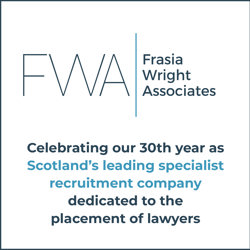Book Review: The Law of Sexual Offences in Scotland - Harvey & Turnbull
This seminal work by Paul Harvey and Alan Turnbull provides an in-depth, practical study of the sexual offences in Scots law, their prosecution and sentence, writes David J Dickson.

The Law of Sexual Offences in Scotland by Paul Harvey and Alan Turnbull
Published by Bloomsbury, 2025
ISBN 978-1-5265-2802-5
The authors set themselves what would initially appear to be a relatively straightforward task: a guide to the sexual and ancillary offences in Scots law, evidence related to their proof, expert evidence associated with such cases and the trial process from beginning to end. The law in this area has changed over the past few years. The law of evidence has developed somewhat more rapidly. The authors capture all of these developments in a clearly structured, readable format.
The book opens with a thorough examination of forum, territorial jurisdiction (not always easily navigated), before moving on to a detailed consideration of the transition from offences defined in common law to the introduction of the Sexual Offences (Scotland) Act 2009. There is later discussion of the common law offences still available, which will appear historical for those who were not practising when they were applicable. As with the evidential rape shield provisions, the common law has been largely swept away. However, it remains relevant given the number of historical offences prosecuted before the courts.
The issue of consent and free agreement is thoroughly examined. There follows a consideration of the offence within the 2009 Act, as set out in the legislation.
There is a particularly helpful chapter devoted to the development and application of the Domestic Abuse (Scotland) Act 2018. The courts have considered the application and definition of section 1 of the Act, which has led to a transformation in the prosecution of coercive and controlling behaviour, whether involving physical or sexual violence or not. More often than not, indictments include charges of both.
At the end of each chapter, the authors have provided a table setting out the offence and available sentences. A useful ready reckoner.
Where appropriate, in discussing each of the offences, there is helpful background as to the mischief the legislative provision was introduced to address. This enables the reader to have a clearer understanding of both the nature and intent of the offence.
Next, the authors deal with the prosecution of offences discussed in the book. Not only is there a clarity to the writing explaining the provisions of sections 274 and 275 of the Criminal Procedure (Scotland) Act 1995, as well as the three most recent references by the Lord Advocate, but the authors have also included two chapters from experts in the field of medical and forensic evidence. These chapters bear particular reading.
Dr Deborah Wardle writes on the medical evidence gathering, interpretation and presentation in sexual offences. There are helpful insights into such areas as the time window for the recovery of evidence and clinical findings of the forensic medical examiner. Myths and misperceptions are addressed.
Dr Nighean Stevenson describes forensic scientific evidence from crime scene to court. Dr Stevenson sets out the technical processes involved in the recovery of samples, which are further examined in terms of their interpretation and presentation. This allows for a clear understanding of the value that can be attributed to such evidence.
The authors then turn to consider the trial process, and they bring welcome clarity to understanding the statutory provisions on special measures. The direction of travel of witnesses giving evidence in court is seen as being informed both by trauma and the manner that will ensure the evidence of of the witness is most effectively presented. For some witnesses, this may be in person, for others, by giving evidence earlier at a commission. These can be finely balanced judgements.
The Lord Advocate’s references are central to the text. The chapter dealing with the evidential landscape following these decisions is a work of clarity. It will take some time for the effect of these decisions to embed themselves in practitioners’ thinking. The discussion in this text will aid that understanding no end.
One way to test a book is to think of an awkward point or difficult issue and see if the answer can easily be found. Be assured this book answers that, in abundance. This book is unrivalled and should be close to hand for any practitioner appearing before the courts while dealing with offences of this nature.
Click here to order your copy of this important new title
Written by David J Dickson, Solicitor Advocate






